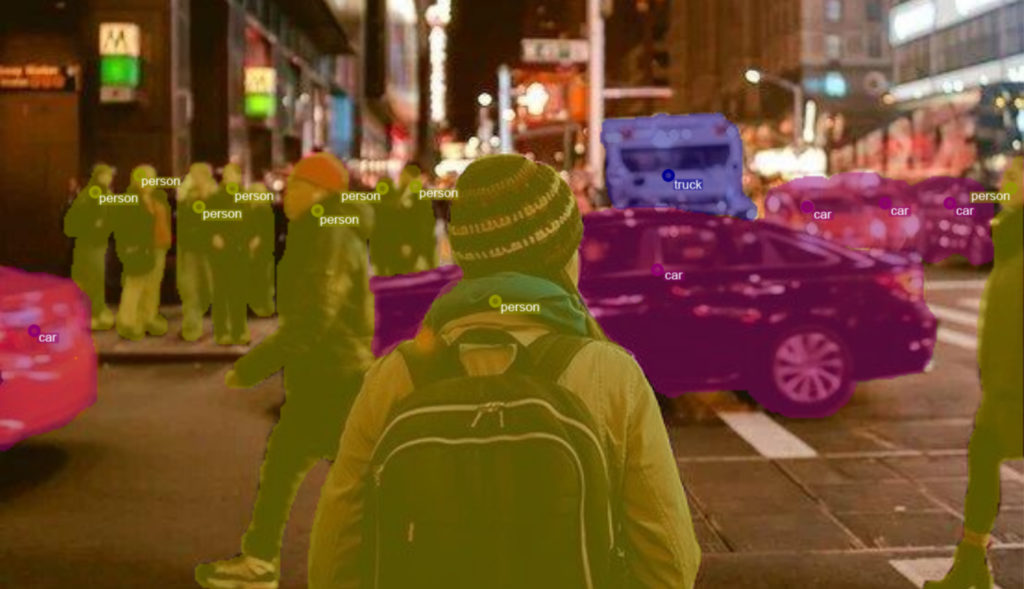Image labeling (sometimes known as image annotation) is the process of creating a textual and visual description of the content of images. These labels / annotations are then used to train deep learning computer vision models for tasks such as object detection.
Image labels can be created using either online or offline tools. Deciding upon whether online or offline image labeling tools are the best fit for your requirements depend upon a variety of factors. Here, we will dissect the key features, advantages and disadvantages of online and offline image labeling tools to help you choose the most suitable tool for your project.
Offline image labeling tools
The popularity of offline image labeling tools is primarily as a result of data remaining in the clients PC, rather than having the visual data uploaded to an online server. This helps to ensure full data protection of sensitive content by preventing any fraudulent third parties from accessing the content.
Moreover, for remote areas without stable and fast internet connection, images do not need to be uploaded into an online platform which can reduce any poor-wifi induced bottlenecks in the labeling process. However, the labelers will still need to access and download the images in the first place and also once the labels have been created. This is a time intensive process that often involves initially downloading the photos via the web or from a USB stick, which negates the offline benefits for areas with poor connection.
Additionally, when using offline AI-assisted image labeling tools, the platform is entirely reliant on the capabilities of the employees’ computing units. AI-assisted labeling tools involve a trained AI model giving the user labeling suggestions, which helps to greatly speed up the labeling process. Very few offline labeling tools have this feature and even if they have it, it is complicated to set up and requires GPU hardware, leading to a more intricate and expensive set up compared to the online tools that could be completed using a standard computer or laptop.
There are other limitations to offline image labeling tools, especially for collaborative labeling processes involving multiple team members.
Offline labeling models do not allow labellers and/or managers to keep track of work progress in real time. Hence, if these models are used by a group of people in a certain company, it is more challenging to assess the efficiency of the workflow or promptly troubleshoot the hurdles that employees might encounter amidst a task. It can be a rather common scenario that the labeling team member misunderstands the labeling instructions from the supervisor and this misunderstanding results in a large number of hours spent labeling images in a wrong way before they are returned to the supervisor.
Online image labeling tools
Online labeling tools help to avoid such cases, because the supervisor is able to immediately see the images being labeled by his team and give them feedback, which explains the growth in popularity for online labeling tools, especially for large collaborative projects.
Not only do online image labeling platforms provide synchronous accessibility and availability, they also allow for more efficient management of image labeling tasks by providing labeling time tracking. Manually sharing the data created with an offline image annotation tool with your labeling personnel can be a laborious task, especially if they work off-site, whereas online image labeling tools allow for multi-access in real time, which helps to avoid this inefficient process.
Online image labeling tools are also less reliant upon expensive hardware such as expensive graphic cards (GPU), especially when using AI-assisted labeling tools. The online labeling platforms that have AI-assisted labeling tools do not require any set-up or model training, as the model has been trained on the server side. This in turn allows companies to avoid setting up and maintaining expensive computing units, since a basic computer/laptop would be sufficient to handle online labelling tasks.
In spite of the advantages explained above, online image annotation tools may still be inconvenient for certain industries. Since online annotation relies on uploading visual data to an online platform, this method might not be suitable for industries that handle sensitive or classified data with strict data protection policies.
SentiSight.ai Online Image Annotation Tool
SentiSight.ai’s online image annotation tool (or labelling tool) has been designed to speed up the image labeling process by offering a range of customisable AI-powered capabilities, whilst also avoiding many of the privacy pitfalls commonly associated with other online image labeling tools.
Features of the SentiSight.ai Image Annotation Tool
The SentiSight.ai platform allows users to add several types of labels, including:
- Classification labels
- Bounding boxes
- Polygons
- Polylines
- Points and bitmaps
Each labeled object can have several child objects, such as key-points or attributes. Additionally, users can convert polygons to bitmaps, and vice versa.
To improve the efficiency of your labeling, SentiSight.ai offers a range of intuitive AI-assisted capabilities. For greater insight, read our guide to AI-assisted Image Labeling.
Once the labels have been created, they can be used to train deep learning models on the SentiSight.ai site, or downloaded in a .json format for use in your in-house model training.
Project Management Functionalities

The SentiSight.ai platform offers users useful project management functionalities, to improve the efficiency and accuracy of collaborative labeling exercises. The labeling time tracking feature allows employers to accurately calculate the time spent by employees’ on specific tasks and projects.
Project supervisors are also able to track annotation progress for every user, providing real-time feedback and analysis. The image filtering tools allow users and supervisors to narrow down their image searches by label type, label name, or by people responsible for the label creation and review.
Privacy
One of the key considerations users make when opting for offline image labeling models is the increased security and privacy associated with offline servers, especially for classified content. Given the limitations of offline models, this has often meant users must sacrifice efficiency in the pursuit of security. SentiSight.ai has rigorous data protection policies that ensure confidentiality is consistently guaranteed, meaning that those searching for the right image labeling tool no longer need to choose between security and efficiency.
Conclusion
The decision of whether to use an online or offline image labeling tool relies on an array of factors such as the nature of the tasks to be completed, the amount and sensitivity of data to be processed, the overall requirements of the business and the reliability of the hardware in use. Undoubtedly, online labelling outweighs making use of an offline tool, especially for collaborative projects due to the multi-access and real time features which help contribute to a more efficient image labeling process.If you are interested in utilising the power of image labelling for your project, the SentiSight.ai online image annotation tool is free to try for yourself!

